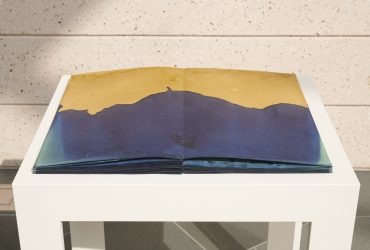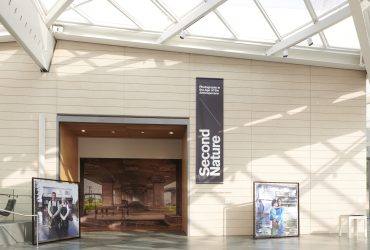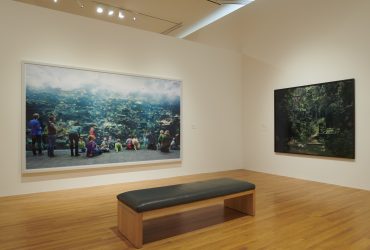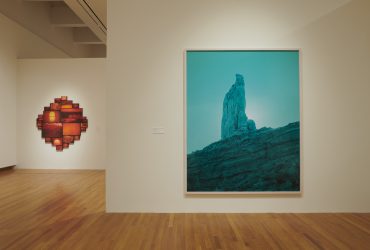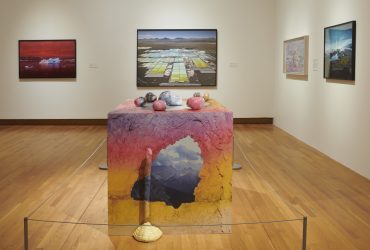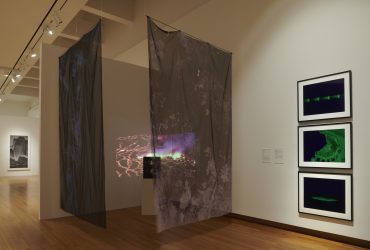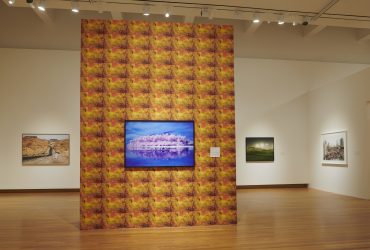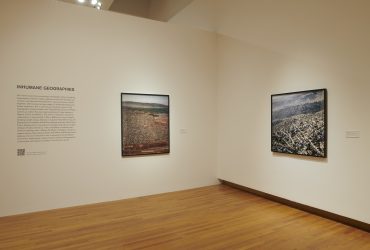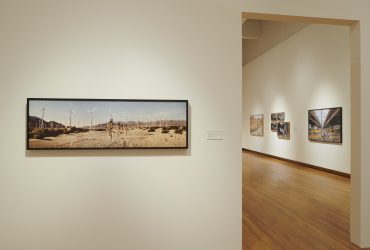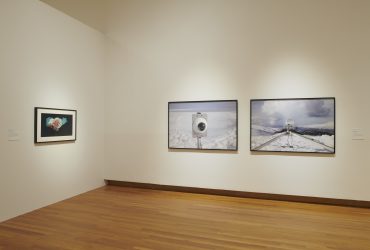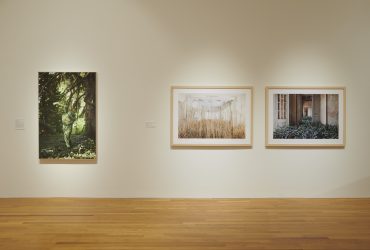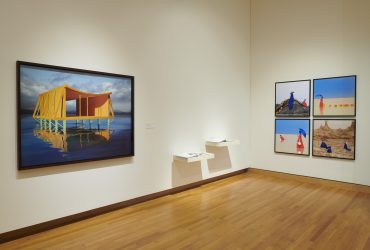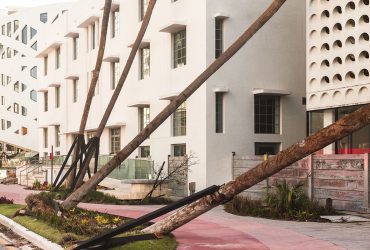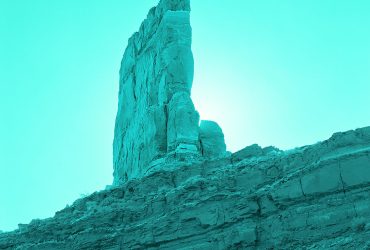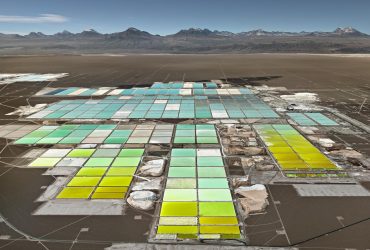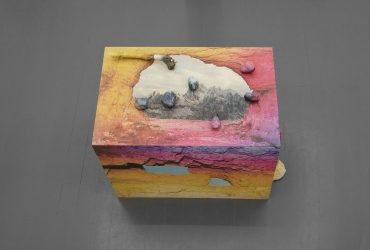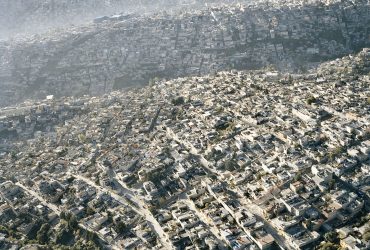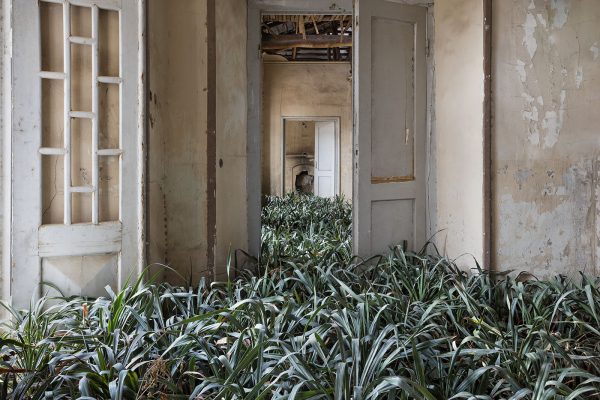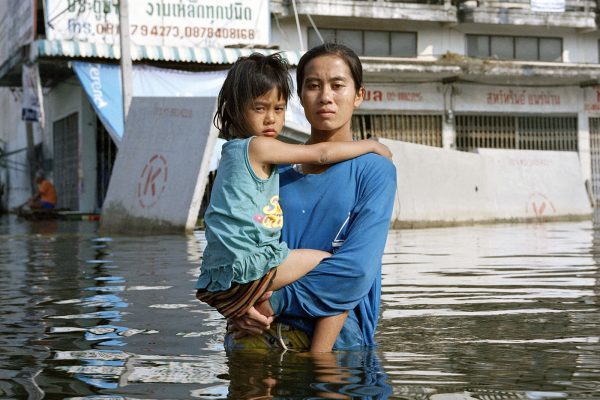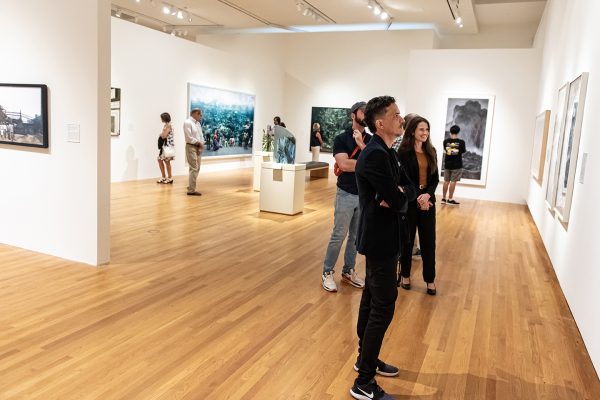Second Nature: Photography in the Age of the Anthropocene

Just over twenty years ago, scientists introduced a term to denote a new geological epoch in which human activity has had a marked impact on the global climate: the Anthropocene. Since that time, the concept of the Anthropocene has been exposed to a wider public audience through expanding environmental studies and scholarship, increasing coverage in the popular press, widespread and fervent activism, and a variety of artistic responses.
Second Nature: Photography in the Age of the Anthropocene is the first major exhibition to examine the Anthropocene through the lens of contemporary photography. Comprised of forty-five photo-based artists working in a variety of artistic methods from studios and sites across the globe, Second Nature explores the complexities of this proposed new age. Collectively, these artists offer compelling visual imagery necessary for picturing the Anthropocene: aerial views of beautiful but toxic sites, collages that incorporate archival photographs to counter colonial narratives, depictions of urbanism on an unimaginable scale, and imagined yet precarious futures. In doing so, they address urgent issues such as vanishing ice, rising waters, and increasing resource extraction, as well as the deeply rooted and painful legacies of colonialism, forced climate migration, and socio-environmental trauma.
Since its emergence, the term “Anthropocene” has entered the common lexicon and has been adopted by disciplines outside of the sciences including philosophy, economics, sociology, geography, and anthropology, effectively linking the Anthropocene to nearly every aspect of post-industrial life. Organized around four thematic sections, “Reconfiguring Nature,” “Toxic Sublime,” “Inhumane Geographies,” and “Envisioning Tomorrow,” the exhibition proposes that the Anthropocene is not one singular narrative, but rather a diverse and complex web of relationships between and among humanity, industry, and ecology—the depths and effects of which are continually being discovered.
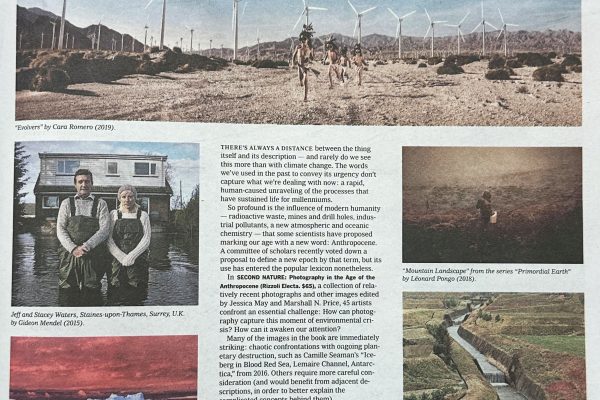
This book, which will accompany a traveling exhibition, offers a sweeping exploration of the vast and mismatched time scales of photography, climate change and 'deep time' of geologic history. Looking is hard; not looking will end up being harder.
Tatiana Schlossberg, in a review of the exhibition catalogue for Second Nature: Photography in the Age of the Anthropocene
Artists
Sammy Baloji (born in Lubumbashi, Democratic Republic of the Congo), Adrián Balseca (born in Quito, Ecuador), Matthew Brandt (born in Los Angeles, CA), Edward Burtynsky (born in St. Catharines, Canada), María Magdalena Campos-Pons (born in La Vega, Matanzas, Cuba), James Casebere (born in Lansing, MI), João Castilho (born in Belo Horizonte, Brazil), Elena Damiani (born in Lima, Peru), Gohar Dashti (born in Ahvaz, Iran), Sanne de Wilde (born in Antwerp, Belgium), Andrew Esiebo (born in Lagos, Nigeria), Gauri Gill (born in Chandigarh, India), Noémie Goudal (born in Paris, France), Todd Gray (born in Los Angeles, CA), Acacia Johnson (born in Anchorage, AK), Mouna Karray (born in Sfax, Tunisia), Robert Kautuk (born in Iqaluit, Nunavut), Zhang Kechun (born in Bazhong, Sichuan Province, China), Rosemary Laing (born in Brisbane, Australia), Sze Tsung Nicolás Leong (born in Mexico City, Mexico), Anna Líndal (born in Hvammstangi, Iceland), Inka Lindergård (born in Saltvik, Finland) and Niclas Lindergård (born in Sandviken, Sweden), Pablo López Luz (born in Mexico City, Mexico), Dhruv Malhotra (born in Jaipur, India), Laura McPhee (born in New York, NY), Gideon Mendel (born in Johannesburg, South Africa), Hayley Millar Baker (Gunditjmara and Djabwurrung, born in Melbourne, Australia), Joiri Minaya (born in New York, NY), Richard Mosse (born in Kilkenny, Ireland), Aïda Muluneh (born in Addis Ababa Ethiopia), Léonard Pongo (born in Liège, Belgium), Meghann Riepenhoff (born in Atlanta, GA), Cara Romero (Chemehuevi, born in Inglewood, CA), Anastasia Samoylova (born in Moscow, Russia), Camille Seaman (Shinnecock, Born in Huntington, NY), David Benjamin Sherry (born in Stony Brook, NY), Toshio Shibata (born in Tokyo, Japan), Sim Chi Yin (born in Singapore), Thomas Struth (born in Geldern, Germany), Danila Tkachenko (born Moscow, Russia), Rajesh Vangad (born in Dahanu, India), Letha Wilson (born in Honolulu, HI), Will Wilson (Diné/Navajo, born in San Francisco, CA), Yang Yongliang (born in Shanghai, China).
Second Nature / Reconfiguring Nature / Artist Bios
ELENA DAMIANI (BORN IN LIMA, PERU, 1979) challenges our understanding of the present moment by reaching into the past, where she transforms found materials like books, film, and public records into photographic collages, s...
Published
Second Nature / Toxic Sublime / Artist Bios
JOÃO CASTILHO (BORN IN BELO HORIZONTE, BRAZIL, 1978) is interested in using photography not just to report and inform, but to help inspire new ways to think about the world’s future. He is especially interested in the Anth...
Published
Second Nature / Inhumane Geographies / Artist Bios
ZHANG KECHUN (BORN IN BAZHONG, SICHUAN PROVINCE, CHINA, 1980) uses a large-format camera to explore the postindustrial Chinese landscape and its lasting significance to Chinese identity and culture. He showcases nature’s m...
Published
Second Nature / Envisioning Tomorrow / Artist Bios
JAMES CASEBERE (BORN IN LANSING, MICHIGAN, 1953) is established at the forefront of artists working with constructed photography. For the last forty years, Casebere has created increasingly complex models to photograph in ...
Published
Exhibition Catalogue
The exhibition is accompanied by a 224-page, fully illustrated catalogue, published by Rizzoli Electa, that includes eleven essays on a wide range of topics related to art and the Anthropocene. Contributors include Rocío Aranda-Alvarado, Carmen G. Gonzalez, Donna Haraway, Candice Hopkins, Claire L. Hutchinson, Jessica May, Simon Njami, Marshall N. Price, Daniel Richter, Catriona Sandilands, Sheila Watt-Cloutier, Will Wilson, and Norman Wirzba.
Organization & Support

Second Nature: Photography in the Age of the Anthropocene is organized by the Nasher Museum of Art at Duke University, Durham, North Carolina and the deCordova Sculpture Park and Museum, The Trustees of Reservations, Lincoln, Massachusetts. The exhibition is curated by Jessica May, Executive Director, Kemper Museum of Contemporary Art, and Marshall N. Price, Chief Curator and Nancy A. Nasher and David J. Haemisegger Curator of Modern and Contemporary Art, Nasher Museum of Art at Duke University.
At the Nasher Museum, this exhibition is made possible by the Marilyn M. Arthur Fund; the Nancy A. Nasher and David J. Haemisegger Family Fund for Exhibitions; the Frank Edward Hanscom Endowment Fund; the Prakash and Anjali Melwani Fund; the Derek and Christen Wilson Fund for the Nasher Museum of Art; and Parker & Otis.
TOP and RIGHT: Sim Chi Yin, Shifting Sands #1, 2017. Archival pigment on paper, 16 x 20 inches (40.6 x 50.8 cm). Courtesy of the artist. © Sim Chi Yin.


